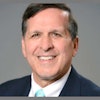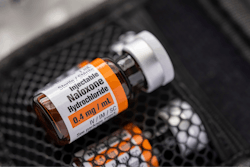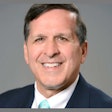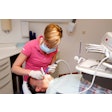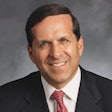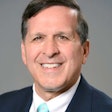
Unless you are living under a rock these days, one does not have to notice that employers of various workplaces are still dealing with a problem that arose during the COVID-19 pandemic and that is there is a lack of workers.
When it comes to dentistry, dental clinics and offices are not immune to the effects of being short-staffed. During the COVID-19 pandemic, dental offices were shut down to conserve personal protective equipment and because the U.S. government considered dental treatment that was not emergency-based to be nonessential.1
Each state then chose when it would reopen and thus, not all dental professionals returned to the workforce at the same time.1 When dental clinics and operatories reopened, not all dental personnel were returning to their careers.
For various reasons that have been studied, dental professionals listed burnout, early retirement, fear of illness, and family commitments such as childcare as the main reasons why they would not be returning to the operatory right away.2
Now, three years after the last COVID-19 wave of outbreaks, there still seems to be hesitancy among dental workers and a lack thereof. While many dentists complain that they cannot run their businesses to their full potential, we must ask ourselves who is suffering when there are not enough dental professionals to go around?
Currently, no data show how the lack of dental professionals is affecting already underserved dental patients. Research has alerted us for years that certain groups of the population lack routine dental care, and this not only affects their teeth but has a systemic relationship with their health.3
Some of these underserved patients are pediatric, elderly, institutionalized, uneducated, disabled, and impoverished.3 These patients, who struggled to find access to dental care before 2020, probably are feeling the effects of a lack of dental providers.
Outreach programs to allow better access to care cannot happen with not enough workers. With the rising costs of overhead and a generalized inflation rate in the country, many dental professionals feel they cannot volunteer their time to help others. Thus, what will become of those who so desperately need tooth extractions, restorations, periodontal therapy, prophylaxis, and other dental appointments? Some states have highlighted their concerns about these two trends -- the underserved and the shortage of workers -- begging for legislation that tries to bring about solutions.4
The ADA is hoping that 2024 will finally bring about the changes it needs to provide better access to oral care for all patients and to get more professionals into the workforce. The ADA had several advocacies aimed at disparities passed in hopes of providing better access to care. These advocacies were years in the making and hope to truly make a difference.5 When there is better care, there is a lower rate for dental caries, periodontal disease, oral cancer, and overall health.
As a dental professional, if you want to improve the worker shortage, you could write to your local and state legislators to see what your state of practice is currently doing to address the shortage and provide better access to care. In addition, dental professionals could look to see if there is an opportunity to provide professional care to the underprivileged in their local communities. Hopefully, as 2024 unfolds, we will see an improvement in providing more dental care to the underserved and more licensed dental professionals working.
References
- As Dental Practices Resume Operations, ADA Offers Continued Guidance. American Dental Association. Accessed February 25, 2024. https://wwwwww.ada.org/about/press-releases/2020-archives/as-dental-practices-resume-operations-ada-offers-continued-guidance
- Harrison, B. HPI dental office employment declined in March. ADANews. Accessed February 25, 2024. https://wwwadanews.ada.org/ada-news/2022/april/hpi-dental-office-employment-declined-in-march
- U.S. Centers for Disease Control and Prevention. Disparities in Oral Health. February 5, 2021. https://www. www.cdc.gov/oralhealth/oral_health_disparities/index.htm
- Associated Press. Wisconsin governor signs legislative package aimed at expanding access to dental care. January 31, 2024. Washington Post. https://www.washingtonpost.com/national/2024/01/31/wisconsin-dentists-workforce-shortage-evers-bills/9569f3f6-c05b-11ee-a4c6-8f5c350e9316_story.html
- Anderson, O. 2023 brings many advocacy wins for ADA. American Dental Association. Accessed February 25, 2024. https://adanews.ada.org/ada-news/2024/january/2023-brings-many-advocacy-wins-for-ada/.
Tracee S. Dahm, MS, RDH, is an adjunct clinical instructor for the North Idaho College School of Dental Hygiene in Coeur d’Alene, ID. She also works in private practice. Dahm has published articles in several dental journals, magazines, and a textbook. Her research interests include trends in dental hygiene and improving access to dental care for the underserved. She can be reached at [email protected].
The comments and observations expressed herein do not necessarily reflect the opinions of DrBicuspid.com, nor should they be construed as an endorsement or admonishment of any particular idea, vendor, or organization.

